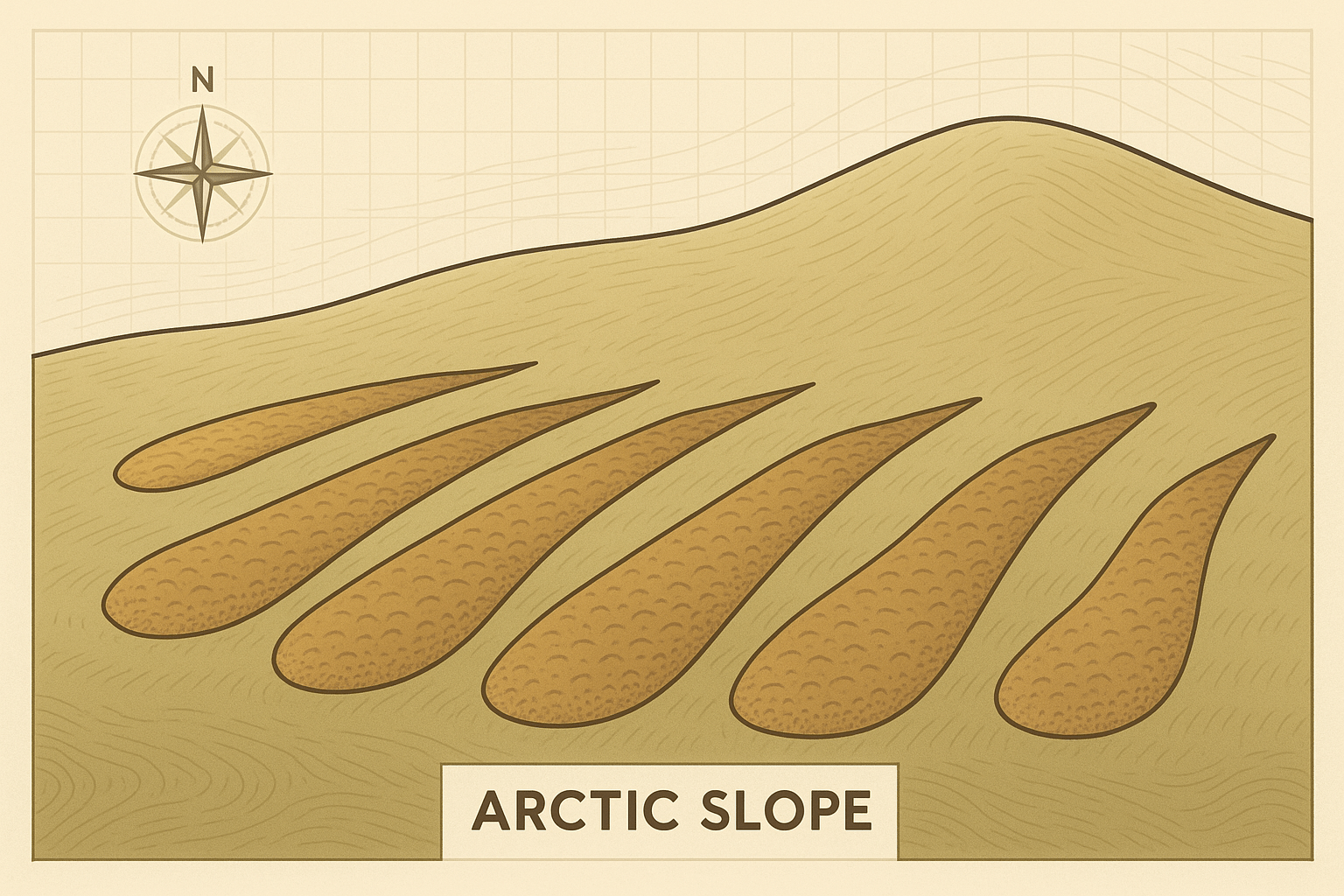Picture a landscape so cold that the ground is frozen solid for most of the year. You might imagine it as static, locked in ice. But in the world’s periglacial regions—the areas on the fringes of glaciers and ice sheets—the ground is alive with slow, inexorable movement. This is the world of solifluction, a subtle yet powerful geological process that causes the very soil to flow downhill, sculpting the terrain into distinctive and fascinating shapes.
What Defines a Periglacial Environment?
Before we can understand how soil flows, we need to understand where it happens. The term “periglacial” literally means “near glacial.” These are not environments buried under kilometers of ice, but rather landscapes profoundly influenced by intense cold and frost. The defining characteristic of a periglacial environment is the presence of permafrost—ground that remains frozen for at least two consecutive years.
Permafrost can extend hundreds of meters deep and acts as an impermeable, solid base. Above it lies the “active layer”, the upper layer of soil that thaws during the brief summer and refreezes in the winter. This relentless cycle of freezing and thawing is the engine that drives the unique land-forming processes of the region, with solifluction being one of the most significant.
These environments are found across vast swathes of the globe, including:
- Much of Siberia, Alaska, and Northern Canada
- High-altitude mountain ranges like the Alps, the Andes, and the Himalayas
- Sub-Antarctic islands such as South Georgia and the Kerguelen Islands
The Mechanics of Solifluction: A Slow-Motion Landslide
Solifluction, which translates from Latin as “soil flow”, is essentially a very, very slow landslide. It occurs on even gentle slopes (as low as 2 degrees) and moves at a rate of just a few centimeters per year. The process is a two-part dance between freezing and thawing.
Step 1: The Freeze and Heave. During the winter, water within the active layer freezes. As water turns to ice, it expands by about 9%. This expansion, known as frost heave, pushes soil particles and stones upwards, perpendicular to the surface of the slope.
Step 2: The Thaw and Flow. When summer arrives, the active layer thaws from the top down. The meltwater, however, cannot drain away because the permafrost below acts like a solid concrete slab. The active layer becomes completely saturated, turning into a viscous, mud-like slurry. Gravity, which always pulls straight down, takes over. The water-logged soil, unable to hold its structure, begins to ooze slowly downhill.
This combination of upward heave followed by a vertical drop due to gravity results in a net downslope movement. Imagine a tiny particle in the soil: it gets lifted up and out during the freeze, and then slumps straight down during the thaw, ending up slightly further down the hill than where it started. Repeat this cycle for thousands of years, and entire hillsides begin to creep downwards.
Sculpting the Landscape: The Telltale Signs of Solifluction
This slow but persistent movement leaves behind unmistakable evidence, creating a landscape that looks almost like it’s been molded by hand. Geomorphologists can read these features like a book, understanding the forces at play.
Solifluction Lobes and Sheets: The most classic features are solifluction lobes and sheets. Where the soil moves more or less uniformly across a hillside, it forms a broad sheet. More commonly, variations in moisture content and vegetation cause the soil to move at different speeds, forming distinct, tongue-shaped lobes that spill down the slope. These lobes often have steep fronts, sometimes covered in vegetation that has been carried along for the ride.
Terracettes: On grassy slopes, solifluction can create a series of small, step-like terraces. These features, known as terracettes, can sometimes be mistaken for paths worn by grazing animals, but they are in fact a direct result of the soil slowly slumping downhill beneath the turf.
Patterned Ground: Solifluction often works in tandem with frost heave to create one of the most visually stunning periglacial phenomena: patterned ground. The annual freeze-thaw cycles can sort rocks and finer sediments. This sorting action can arrange stones into remarkable geometric patterns, including circles, polygons, and, on steeper slopes where solifluction is more active, elongated stone stripes that run directly downhill.
A Changing Climate and the Human Connection
While solifluction is a natural process, its rate and extent are deeply connected to climate. As global temperatures rise, permafrost is beginning to thaw at an alarming rate. A warmer climate means a deeper active layer in the summer, leading to more water-logged soil and potentially accelerating the rate of solifluction.
This has serious implications for human geography, particularly in the Arctic, where about four million people live. Infrastructure is built on the assumption of stable, frozen ground. Accelerated solifluction and thawing permafrost threaten:
- Buildings and Roads: Foundations can become unstable, causing buildings to tilt and roads to crack and slump. Cities like Yakutsk, Russia—the largest city built on continuous permafrost—face immense challenges.
- Pipelines: Major infrastructure like the Trans-Alaska Pipeline System was engineered with supports to prevent the hot oil from melting the permafrost, but widespread, unpredictable changes in the landscape still pose a risk.
- Coastal Erosion: In coastal areas, thawing permafrost combined with solifluction can dramatically increase erosion rates, forcing entire communities to relocate.
The “drunken forests”, where trees tilt at wild angles as the ground beneath them shifts, are a picturesque but ominous sign of this widespread thaw.
From the sweeping tundra of Siberia to the high peaks of the Andes, solifluction is a quiet giant, constantly at work. It is a fundamental process that shapes nearly a quarter of the Earth’s land surface, creating bizarrely beautiful patterns and landforms. Today, it also serves as a critical barometer for a warming world, reminding us that even in the planet’s frozen realms, change is the only constant.
